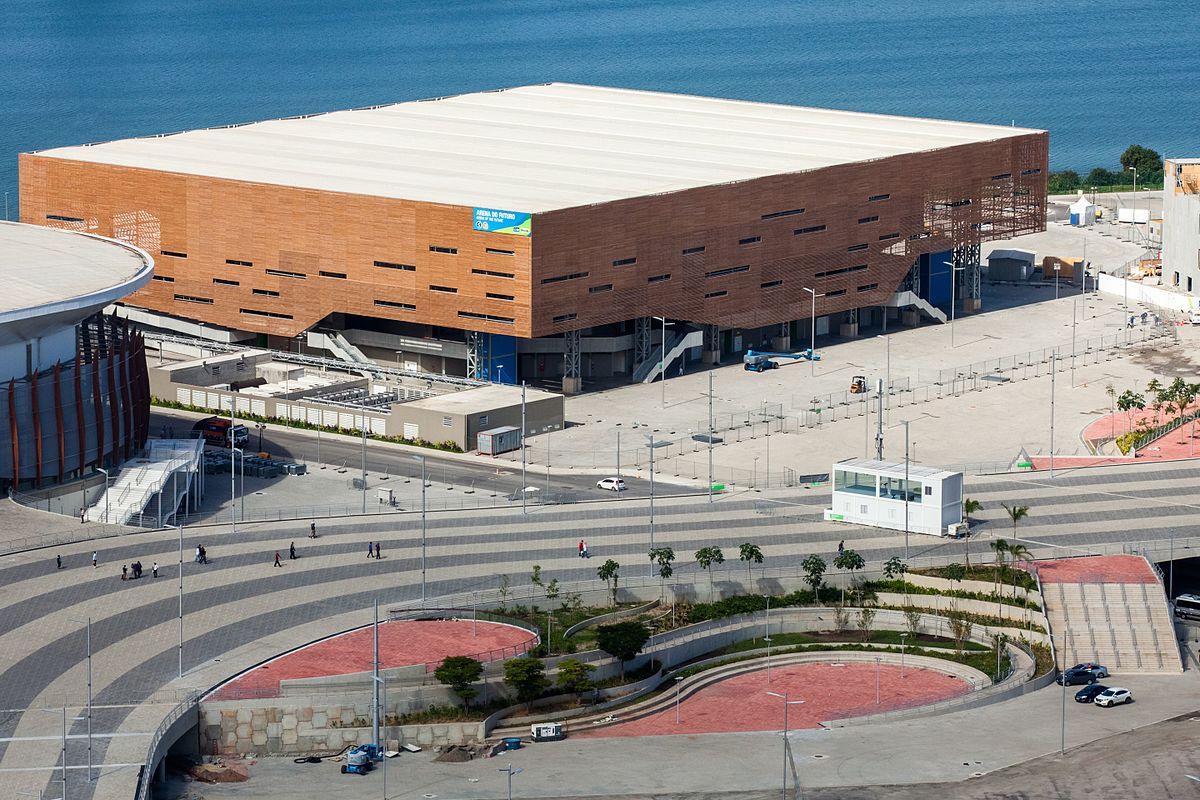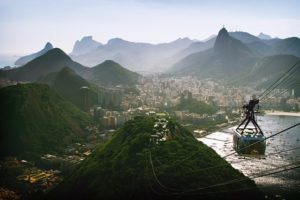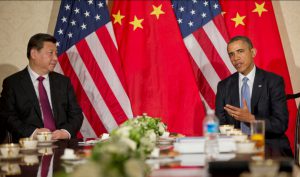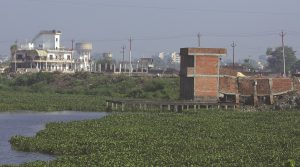With the likes of Usain Bolt, Simone Biles and Michael Phelps departed, Rio de Janeiro’s residents will now get to experience the city’s new transport infrastructure for themselves. The new system, parts of which inhabitants of this year’s Olympics host city were unable to access during the sporting mega-event, is the greatest legacy of Rio 2016 according to organisers.
Brazil’s sports minister Leonardo Picciani said that improved urban mobility is an “enormous” legacy for Rio residents.
“Beyond this,” Picciani said, “there is an intangible legacy. The Olympic Games are an inspiration for the practice of sport, for young people to include sport in their daily lives, in their day-to-day existence, and they are an instrument of social inclusion.”
Those who will depend on the transport service every day are more sceptical: “On the Olympic days, the train came very often, we were even able to sit down on the train!” a passenger who chose remain anonymous told Diálogo Chino. A resident of Madureira in Rio’s northern zone, she fears overcrowding and long waits now the competitions are over.
The city has said that altering the pattern of daily life in Rio will be gradual, with the hope that more people will leave their cars at home and use public transport. According to authorities, only 18% of residents were using the subway lines and the rapid transit train before improvement works. The expectation is that in one year’s time this figure will reach 63%.
More than 150 kilometres of BRT (Bus Rapid Transit) corridors connecting the poorer and more distant regions of the city will be operating, as well as the subway expansion, according to an official report looking at the legacy of Rio 2016.
Hopes and fears
Rio’s city authorities hope the Olympics’ works will repeat improvements in urban mobility in Beijing following the 2008 Games, which the International Olympic Committee (IOC) said was its main legacy. “The investments also led to an expansion of the roadway network in Beijing and a large subway expansion with new lines, in addition to the fast train to Tianjin,” an IOC report said.
Wei Xuebin, a Beijing resident for 15 years who lives close to the Olympic venues, witnessed great changes in the transportation network around the city’s 5th ring road. However, he says the rapid urban development in northern suburbs Changping and Yanqing in recent years means he’s unsure whether these changes can be attributed to the Olympics.
“For me, the only benefit of the Olympic games is now we have the Olympic Forest Park and the Olympic Green. I live nearby and it makes feel very comfortable,” Wei told Diálogo Chino.
Rogério Valle, professor at the Federal University of Rio de Janeiro, who is working on a paper examining the impact and legacy of the Rio 2016 Olympic and Paralympic Games, is more cautious about the Brazilian case: “We’ll see how it plays out in everyday life. It’s good to remember that one significant BRT line has not been completed.”
Regeneration
Officially, the Rio de Janeiro Olympic Games cost 39.07 billion Brazilian reais (US$12 billion). With public and private investment, the regeneration of the historic but long neglected port area near the city centre is also identified as a significant improvement and received thousands of tourists during the Games.
“The recovery of the port region, where the town originated and which was very degraded, was returned to the citizens of Rio de Janeiro and to the tourists who visited the city,” said Picciani.
Valle agreed, saying the city gained a cultural attraction where a LRV (light rail vehicle) also passes.
As for the Olympic Park, which was financed through a public-private partnership, restructuring will begin after the Paralympics. About 60% of the area will be given over to public uses and the rest will be transformed into a residential neighbourhood.
The ‘Arena of the Future’ in the region of Jacarepaguá, in the western part of Rio will accommodate four schools. The Aquatics Centre will be converted into two swimming centres in the Madureira and Campo Grande neighbourhoods.
“Some installations will be used for the training of high-performance athletes. Some areas will be used for sporting events, programmes for young athletes and social inclusion. Some arenas will be conceded to private interests,” said Picciani.
In London, the Olympic Park regenerated Stratford in the East End, a partially derelict part of the city. But according to the US think tank Brookings, it is still too early to assess the long-term impacts of the investments, although the region has attracted new businesses.
Simon Carrasco, a teacher at a new school in London’s Olympic village, doubted the Games’ would have a lasting positive impact given the experiences of other cities but has been impressed with the transformation of the East London site.
“What was previously a no-go area has now become one we take pride in and regularly visit for leisure,” Carrasco said.
Thanks to the Olympics, Carrasco said his students have access to “incredible” facilities and the majority also live close to the school in modern, safe and well-kept blocks. However, venues such as the velodrome are not affordable for all and many apartments bought by foreign property investors remain unoccupied.
Allan Brimicombe, professor at the University of East London, sees good examples set by London in 2012. “We don’t have big white elephants, which are forgotten or unused stadiums,” he said in a debate organised by Queen Mary University of London.
Unrealised fears
“The most important thing is that none of the entire list of fears came to pass,” said Valle. Prior to the Games, observers feared health impacts of hosting competition in Guanabara Bay, which was heavily polluted, an outbreak of zika virus, fears of terrorist attacks, and the collapse of the public transport system.
All indications are that the Paralympics, which will take place from September 7 to 18, will also be free of these concerns. For the Brazilian Olympic Committee (BOC), the feeling is that of “mission accomplished.”
Assessing the costs of the Games, however, is still causing controversy. “It’s very complicated. There are no mechanisms to calculate the cost of so-called intangible things,” said Valle, referring to perceptions of Rio that may have been changed as a result of the negative press coverage.
“Rio 2016 may have been the cheapest in history, or the most expensive,” Valle said.







